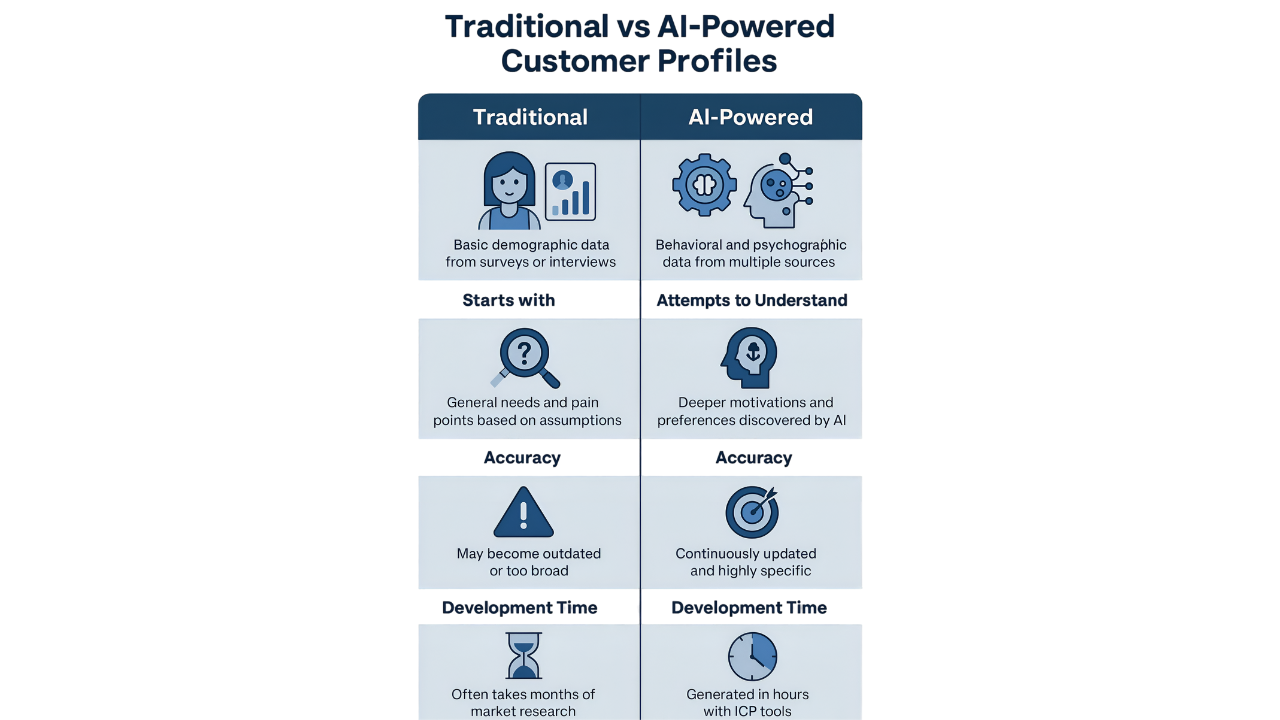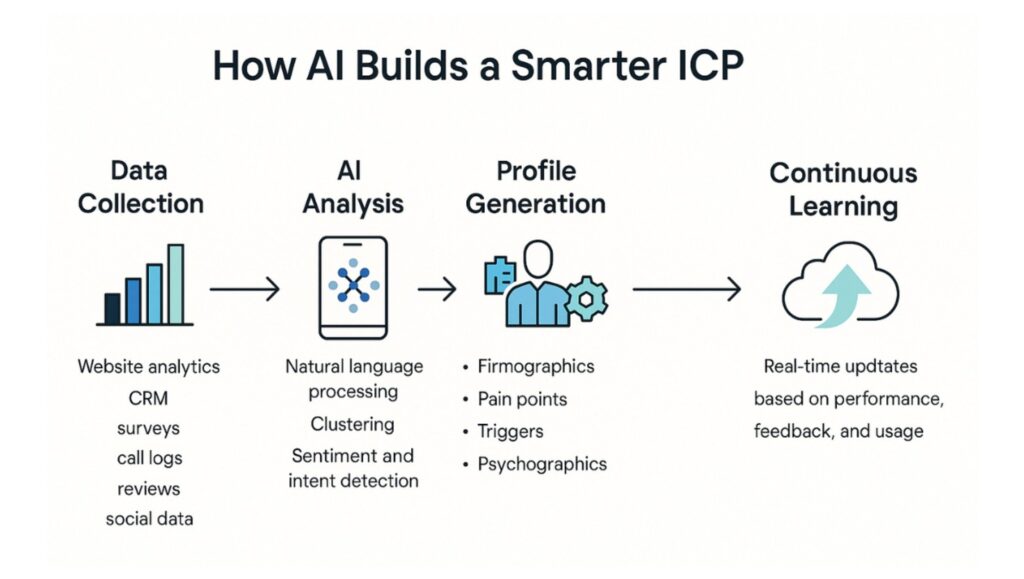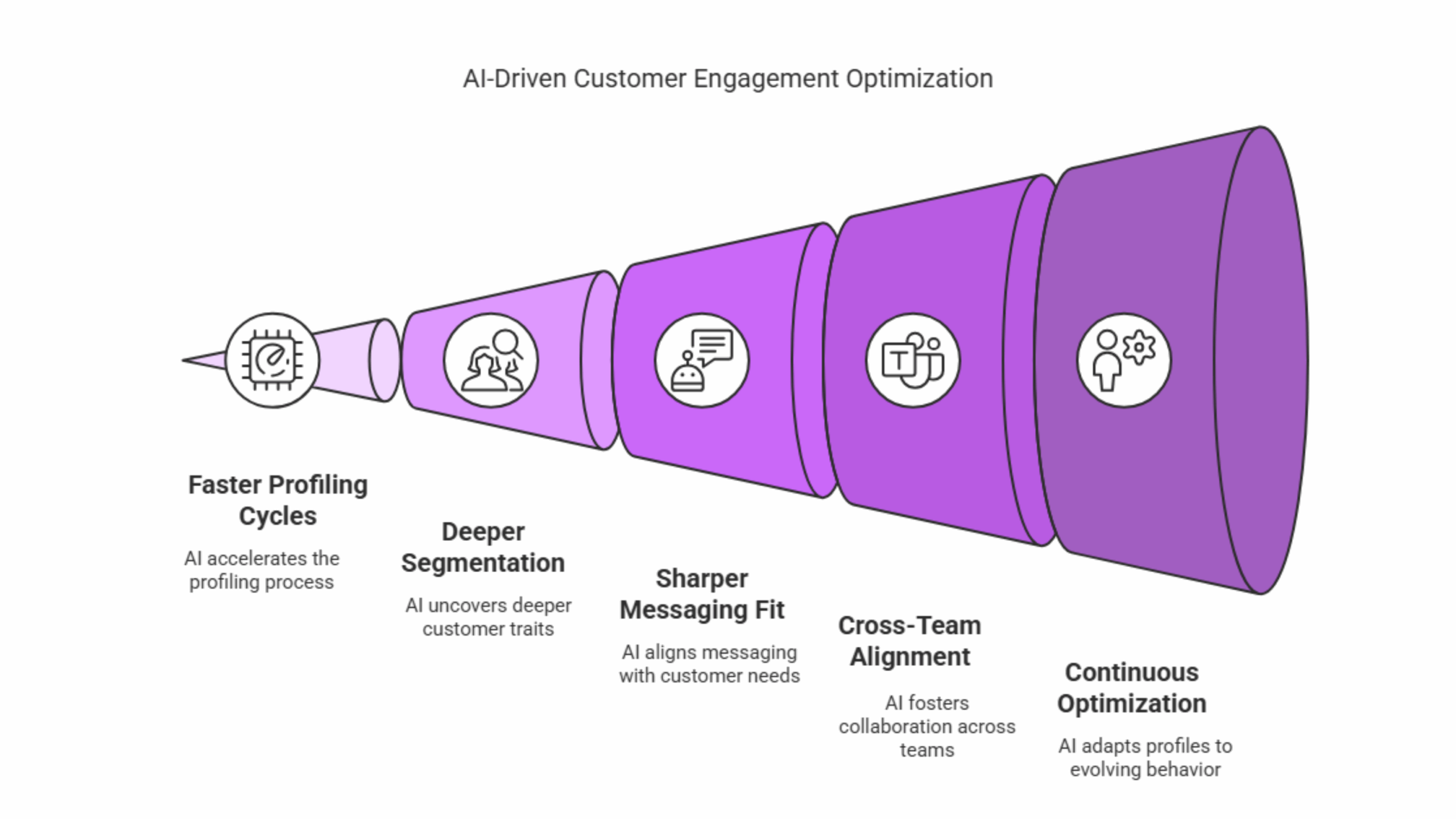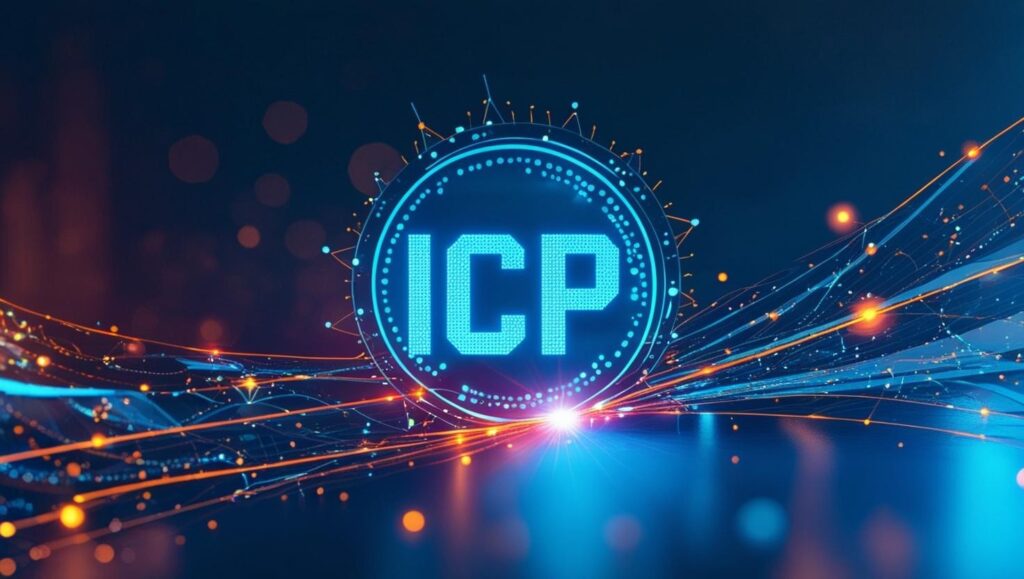Understanding your ideal customer has always been fundamental to business growth. But traditional methods built around static demographics or anecdotal research often result in generic profiles that fail to drive meaningful engagement.
AI brings a new level of depth and agility to customer profiling. By uncovering behavioural patterns, psychographic traits, and real-time decision signals, AI enables businesses to create sharper, more actionable profiles. The result is faster segmentation, better targeting, and more precise messaging that aligns with evolving customer needs.
What Is an Ideal Customer Profile (ICP)?
An Ideal Customer Profile (ICP) is a detailed representation of the type of customer who would benefit the most from your product or service and, in turn, provides the most value to your business. It goes beyond basic demographics to include firmographics (like company size or industry), pain points, buying triggers, and behavioural traits.
A strong ICP helps teams align around who to target, how to communicate, and where to invest marketing and sales efforts. It’s not just about identifying potential customers, it’s about identifying the right ones, with the highest likelihood of conversion, retention, and long-term growth.
Traditional vs AI-Powered ICPs: What’s Changed?
For decades, ICPs were built through interviews, surveys, spreadsheets, and educated guessing. While this method worked in more predictable markets, it often fails to keep pace with today’s fast-moving, data-rich environments.
AI-powered ICP development changes the game. By analysing structured and unstructured data CRM logs, web behaviour, support chats, and customer reviews, AI can build highly nuanced profiles in a fraction of the time. These modern ICPs don’t just describe your best customers, they reveal how they buy, why they make decisions, and what motivates them to act.

The above comparison illustrates the significant differences between traditional and AI-driven approaches, highlighting speed, depth, adaptability, and business impact.
This shift from assumption-based profiling to data-driven precision has transformed how businesses target and convert their most valuable customers. Unlike traditional ICPs, AI-built profiles are dynamic, insight-rich, and continuously evolving.
Key Components of a High-Impact ICP
An effective Ideal Customer Profile goes beyond demographics. It captures why customers buy, what they value, and how they make decisions. This level of detail is essential for aligning marketing, sales, and product teams around high-impact growth strategies.
AI tools make it easier to build profiles with these richer components by pulling data from customer interactions, support tickets, web behaviour, CRM histories, and more. Let’s break down the core elements every AI-enhanced ICP should include:
ICP Components and Their Business Impact
| ICP Element | Purpose | Business Impact |
| Firmographics | Defines company type (industry, size, revenue) | Targets the right B2B or B2C segments |
| Pain Points | Identifies key struggles customers face | Informs messaging and product positioning |
| Decision Criteria | Outlines how buying decisions are made | Aligns sales approach to real buyer journeys |
| Psychographics | Captures values, motivations, and emotional drivers | Enables personalised, resonant communication |
| Triggers & Timing | Reveals when customers are most likely to convert | Improves campaign timing and lead prioritisation |
While these components have long defined successful ICPs, AI makes it possible to uncover them faster, more accurately, and at scale, without relying on guesswork or outdated assumptions.
How AI Transforms ICP Development?
Building a detailed customer profile traditionally meant long cycles of manual research, interviews, and analytics. But AI flips this on its head by making customer profiling faster, deeper, and more adaptive.
AI doesn’t just collect data – it understands it. Through natural language processing, machine learning, and behavioural pattern recognition, modern AI platforms can identify everyday customer struggles, emotional drivers, and decision-making patterns – often hidden within unstructured data like call transcripts, reviews, or support chats.
More importantly, AI-powered ICPS evolves as new data flows in – product usage, feedback, campaign results – and the system automatically updates and refines the profile, ensuring relevance without rework.
To illustrate how AI enables this transformation, here’s a visual walkthrough of the end-to-end process:

Here’s how the process flows:
1. Data Collection
AI gathers data from website analytics, CRM systems, call logs, surveys, social media, and reviews.
2. AI Analysis
Technologies like NLP, clustering, and sentiment detection uncover patterns, intent, and language that matter.
3. Profile Generation
The system outputs firmographics, pain points, decision triggers, and psychographic layers in one unified profile.
4. Activation
These profiles are then used to launch personalised campaigns, prioritise sales efforts, and guide product development.
5. Continuous Learning
As new data enters the system, the ICP evolves, ensuring your targeting stays relevant and insight-driven over time.
This shift from static documentation to dynamic understanding ensures that every customer interaction improves your ICP, making your marketing and sales more precise with each iteration.
Implementing an AI-Powered ICP Strategy
Creating AI-powered customer profiles isn’t just about choosing the right tool, it’s about aligning the technology with business goals, clean data, and practical workflows.
Below is a step-by-step framework for implementing an AI-driven ICP strategy that delivers measurable results across marketing, sales, and product teams:
Step-by-Step ICP Implementation Strategy
| Step | What to Do |
| Define Objectives | Identify what decisions the ICP will support—targeting, messaging, or sales. |
| Collect Clean Data | Pull customer data from CRM, surveys, web analytics, chats, and support logs. |
| Choose the Right Tool | Match tool to business size, budget, and complexity (e.g., LLM vs. specialised). |
| Craft Strategic Prompts | Create detailed prompts to guide AI—include pain points, audience traits, etc. |
| Review & Refine | Validate AI output with internal teams, test across segments. |
| Deploy Across Teams | Use profiles in campaigns, lead scoring, product strategy, and support flows. |
| Optimise Continuously | Feed new data back into the system for ongoing accuracy and relevance. |
A successful rollout doesn’t require perfection upfront. Start small, one use case and persona, and evolve the system through feedback and real-world testing.
Real-World Impact: How Businesses Are Using AI for ICPs
AI-powered Ideal Customer Profiles (ICPs) are no longer an emerging concept, they’re actively reshaping how businesses identify and engage with high-value customers.
Across industries, teams using AI-driven customer profiling are seeing measurable speed, clarity, and improvements in targeting accuracy. While use cases vary, common outcomes include:
- Faster Profiling Cycles: Businesses are replacing weeks of manual research with data-driven insights generated in hours.
- Deeper Segmentation: AI surfaces emotional, behavioural, and decision-based traits far beyond surface-level demographics.
- Sharper Messaging Fit: Campaigns become more effective when aligned with pain points and motivations revealed by AI insights.
- Cross-Team Alignment: ICPs are no longer just for marketers, sales, product, and success teams benefit from a shared, centralised understanding of the ideal customer.
- Continuous Optimisation: AI refines real-time profiles as customer behaviour evolves, keeping targeting and messaging relevant.
These shifts aren’t just improving campaign performance, they’re fundamentally changing how organisations think about their customers, prioritise their pipeline, and personalise their growth strategies.

What’s Next: The Future of AI-Powered ICPs
AI-powered customer profiling is evolving rapidly. The next phase of innovation will deepen insight and redefine how profiles are applied in real time across business functions.
- Predictive ICPs
Rather than just describing current customer traits, AI will forecast high-value segments before they emerge. These predictive models will help teams anticipate demand, trends, and opportunity areas, allowing for proactive strategy shifts.
- Multimodal Customer Profiling
Future platforms will integrate more than text and numerical data. AI will begin interpreting visuals, audio, and behavioural signals from multiple formats. This will add a richer sensory layer to customer understanding, particularly in industries like fashion, tech, and lifestyle.
- Dynamic ICPs with Continuous Feedback Loops
Profiles will no longer be static documents. ICPs will evolve in real time as customers interact with websites, content, and sales teams. This ongoing refinement ensures every campaign and outreach strategy stays relevant and aligned.
- Human-AI Collaboration
The future is not AI or humans—it’s AI with humans. Teams will co-create customer profiles using intuitive interfaces, conversational prompt engineering, and explainable AI models. This ensures strategic oversight while accelerating insight generation.

Conclusion: From Data to Strategic Clarity
AI has transformed ICP development from a slow, assumption-driven process into a dynamic, data-backed advantage. Businesses that adopt AI-powered profiling will not only understand who their ideal customers are but also why they buy, how they decide, and what truly influences them.
With smarter profiles comes smarter growth.
Ready to Identify and Scale Your Ideal Customer Base?
Explore how NoCrew helps you build, validate, and activate AI-powered ICPs that fuel performance across your marketing and sales funnel. Get in touch with us.


